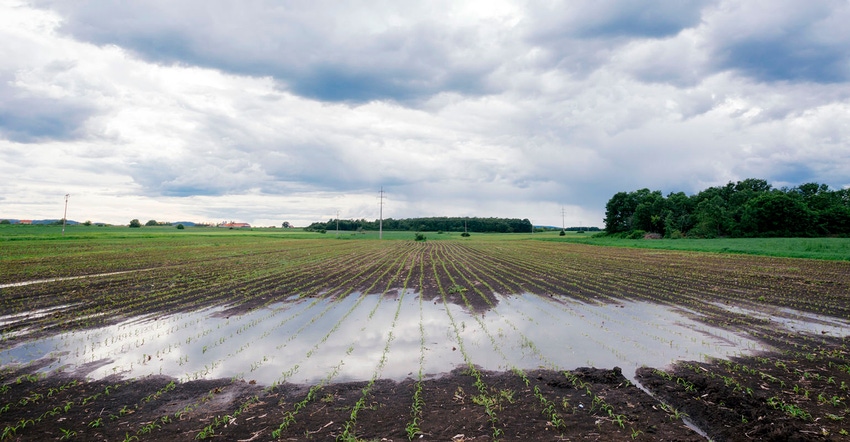
Another week of widespread rainy weather has USDA reporting a slower-than-normal start to the 2022 season. Of particular note, the agency showed corn plantings progressing even slower than analysts predicted in its latest crop progress report, out Monday afternoon and covering the week through April 24. Soybean plantings are also trending slower than they have in recent years. USDA also unexpectedly cut winter wheat quality ratings by another three points.
Corn plantings are now at 7%, versus 4% a week ago. Analysts expected to see more momentum, with an average trade guess of 9%. And planting progress is well below 2021’s pace of 16% and the prior five-year average of 15%. Five of the top 18 production states – Michigan, Minnesota, North Dakota, Ohio and Wisconsin – have not made measurable plating progress yet, according to USDA.
And 2% of this year’s crop is now emerged, primarily in Texas and North Carolina. That puts 2022 below 2021’s pace of 3% and the prior five-year average of 3%.
Soybean plantings are also progressing slower than normal, with 3% completion through Sunday, moving ahead of last week’s 1% and matching analyst expectations. Compare that to 2021’s pace of 7% and the prior five-year average of 5%. USDA is not providing emergence estimates yet.
Spring wheat planting progress reached 13%, which is up from 8% a week ago and one point higher than analyst estimates. That’s far below 2021’s pace of 27% but just modestly behind the prior five-year average of 15%.
Winter wheat quality ratings took a pounding this past week, with USDA lowering them another three points despite analysts expecting them to hold steady. Through Sunday, only 27% of the crop is now rated in good-to-excellent condition, with another 34% rate fair (up a point from last week) and the remaining 39% rated poor or very poor (up two points from last week).
Physiologically, 11% of the crop is headed, up from 7% a week ago. That’s behind both 2021’s pace of 16% and the prior five-year average of 19%.
Click here to learn more about the latest USDA crop progress report, including the agency’s observations on days suitable for fieldwork and topsoil moisture conditions.
About the Author(s)
You May Also Like






